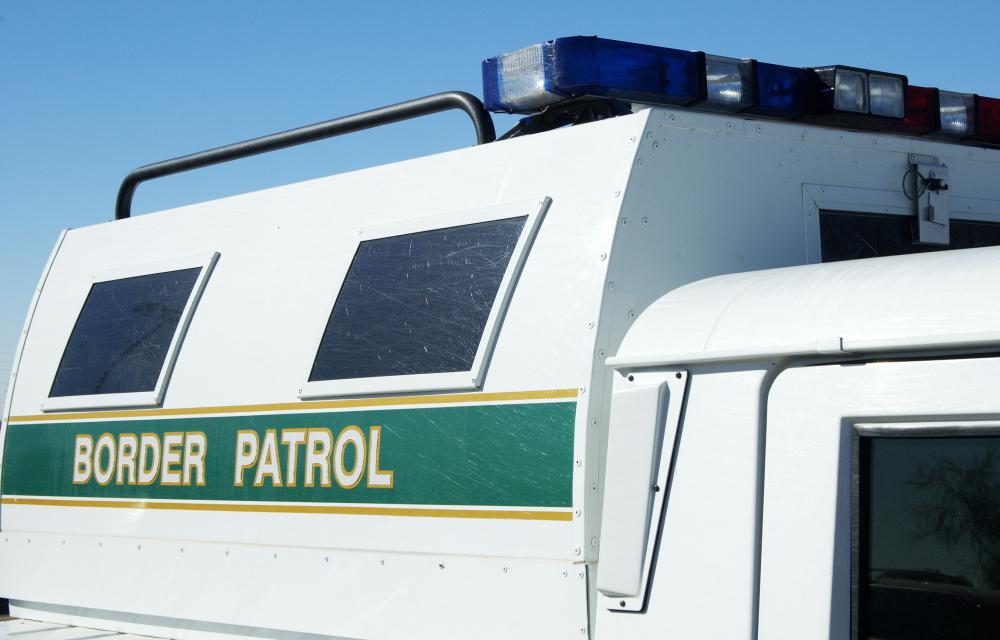At WiseGEEK, we're committed to delivering accurate, trustworthy information. Our expert-authored content is rigorously fact-checked and sourced from credible authorities. Discover how we uphold the highest standards in providing you with reliable knowledge.
What is the US Customs and Border Protection?
The US Customs and Border Protection, also known as CBP, is a federal bureau of the Department of Homeland Security, which was formed in 2003 as an initiative to bolster national defense in response to the US terrorist attacks on September 11, 2001. Different manifestations of customs and border patrol have existed in the US since 1789, when the fifth act of Congress effectively created what would become known as the US Customs Service. Today, the responsibilities of the US Customs and Border Protection include enforcing immigration laws, preventing terrorist attacks and policing drug trafficking.
On September 11, 2001, the US Customs House, located at Six World Trade Center, was destroyed after two planes crashed into the Twin Towers. The event led to both a physical and ideological restructuring of the US Customs Service; in the following months and years it would be overhauled as part of the US government's intensified efforts to prevent further terrorist attacks. This was to be done by facilitating legitimate travel, increasing the number of agents patrolling borders and cross-communicating with the government's various intelligence agencies.

On November 25, 2002, President George W. Bush created the Department of Homeland Security. Shortly thereafter, on March 1, 2003, the US Customs Service was brought into the Department of Homeland Security as the US Customs and Border Protection. Almost immediately, significant changes were made to how the customs service would operate. More border patrol agents were dispatched to the northern and southern borders. The state of Arizona, in particular, received the bulk of attention to monitor the complicated immigration relationship with neighboring Mexico.

The average US citizen felt the greatest impact at airports, where the US Customs and Border Protection enforced stringent new travel regulations. Many items were banned from being carried onto airplanes, such as shaving razors and liquids purchased outside the airport. The Western Hemisphere Travel Initiative, passed in 2005, went into effect in 2008. The act requires hard proof of US citizenship, such as a passport or driver's license, in order for travelers—even US citizens—to enter the country.

Prior to becoming the US Customs and Border Protection, the US Customs Service handled many of the same border responsibilities for centuries. It cooperated in efforts to prevent drug trafficking across borders, and it helped facilitate legitimate air and sea travel. When customs services began in the US in 1789, the mission was more focused on ensuring that import and export tariffs were enforced. In other words, the government wanted to make sure it was able to tax every good that crossed the border. Today, in the ongoing effort to keep the country safe, the number one priority for the US Customs and Border Protection has become security.
AS FEATURED ON:
AS FEATURED ON:













Discuss this Article
Post your comments